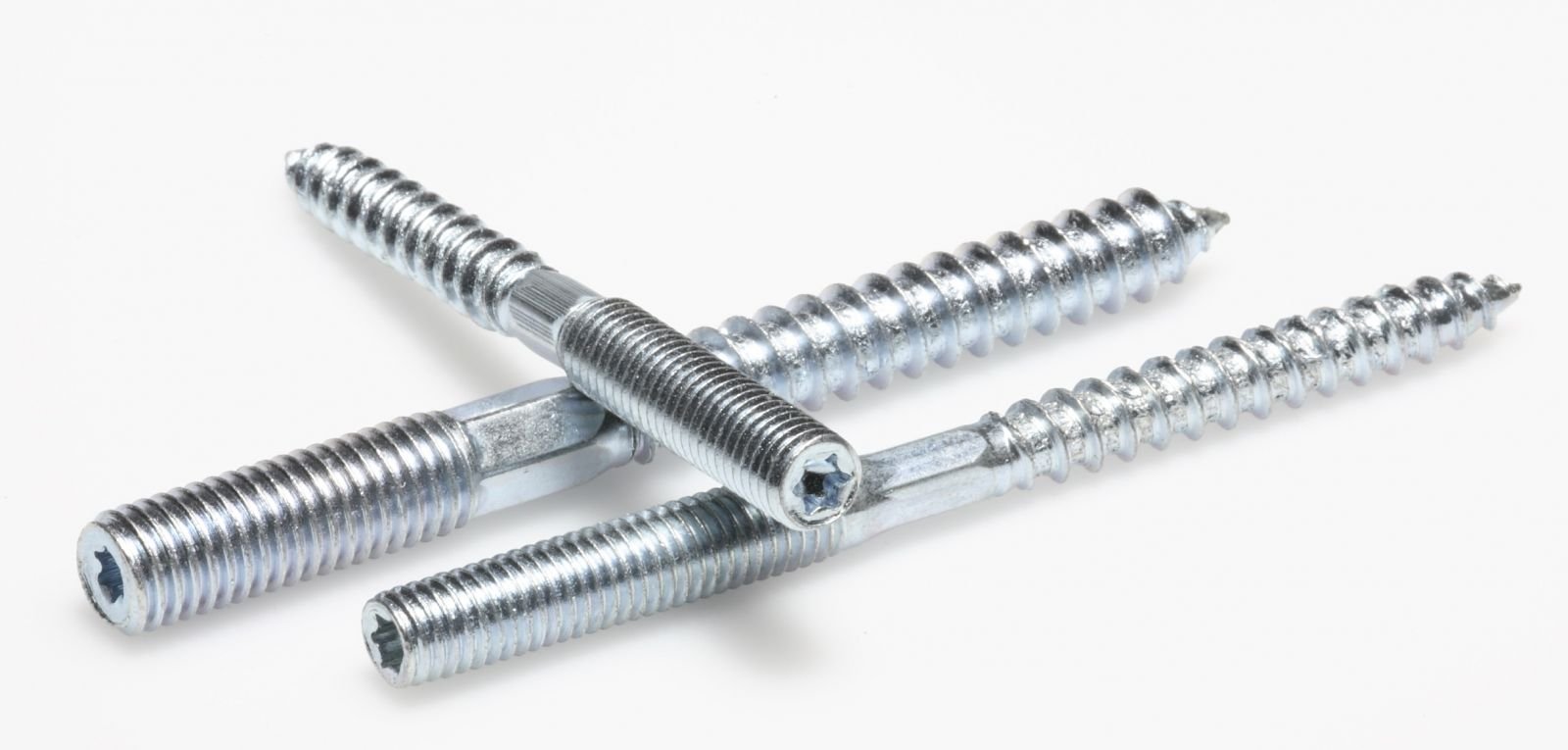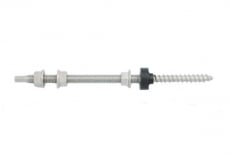Let's explore how this versatile product, the plumbing spindle, can be utilized in various fastening applications. Its application is dictated by the configuration of the threaded rod itself, featuring different threading on each side. On one side, there's metric threading, and on the other, coarse threading similar to that of a screw. One end of the threaded rod can be screwed into wood or a similar material, while the other end can be used to attach a component using a nut and washer.
 |
Understanding the Unique Features of Threaded RodsThis type of threaded rod is often used in conjunction with a dowel – in such a case, the coarse threading is screwed into the dowel in the wall. We can then hang a component, such as a plumbing "tulip," and secure it with a nut. This installation method has led to the name "hanger bolt" or "hanging threaded rod" in English, meaning a detail can be hung on the screwed-in threaded rod and secured using metric threading. |
Diverse Variations of Threaded Rods for Specialized ApplicationsThe threaded rod is commonly employed in plumbing work to fasten pipes, clamps, sinks, toilets, and other plumbing fixtures. Various variations of the threaded rod are produced for different applications, such as an internal hexagon on the metric side (usually for threaded rods with a diameter of M6), a hexagon or square between the threads for a spanner, or a slotted opening for a Torx for faster component assembly using a special manual tool (the latter is supplied with a Torx key). In addition to threaded rods with metric and coarse threading, there are threaded rods with large threading on both sides. These threaded rods are screwed into wood or a plastic dowel on one side, and typically a wooden component is threaded onto them. They are usually manufactured in thread sizes of 8 and 10 mm. |
 |
Recommendations for Optimal Use of Combined Screws and Threaded Rods
- These threaded rods are made of steel and may also have additional coating, typically zinc. During the installation process using combined screws and screws, manufacturers of fastening products suggest considering a few simple recommendations:
- Facing the surface of the base material (tile, plaster layer) is not a load-bearing surface, so the strength of attaching the detail is provided only by the main material.
- For gas concrete and hollow building materials, additional anchoring of holes is required by injecting setting mixtures into them.
- The strongest attachment will be achieved if the sharp end of the plumbing screw-threaded rod is positioned deeper in the hole than the end of the expansion part of the dowel by the diameter of the threaded rod.


 Fastening for solar panels (10)
Fastening for solar panels (10)-4513.jpg)

-4514.jpg)
-4515.jpg)

-4364.jpg)
-9251.jpg)
-5556.png)


-4666.jpg)


-din-125-(x3)-art-9082-epdm-(santekhshpylka)-6550.jpg)
-art-9082-epdm-(santekhshpylka)-7694.jpeg)